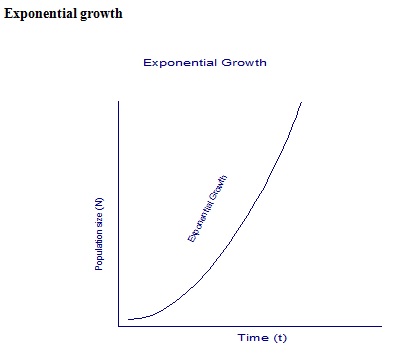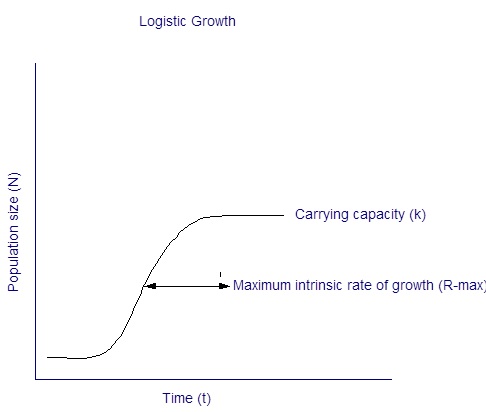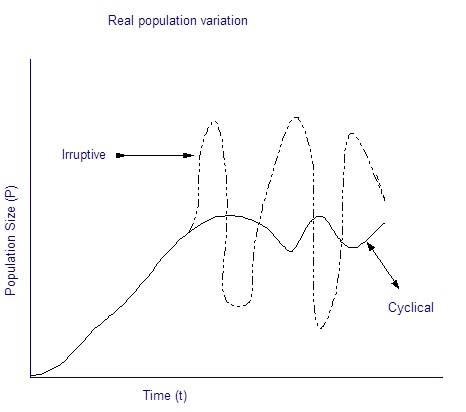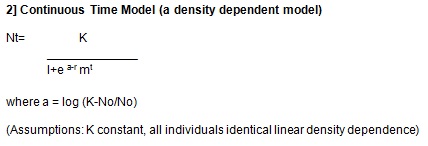AGLS 6502 Lecture 7- Practicing Wildlife Management
7.1 Unit Objectives and Textbooks:
Objectives:
- What is Wildlife Management?
- Approaches to Wildlife Management
- The Process of Wildlife Management
- Components of Wildlife Management
- History of Wildlife Management
- Attitudes towards Wildlife
- Goals of Wildlife Management
Textbooks:
Anderson S.H. (1991): Managing our Wildlife Resources, Prentice Hall, 2nd Edition
What is Wildlife Management - Chapter 1 - Anderson (1991)
7.2 The Practice of Wildlife Management
Definitions:
Wildlife management is the science / art of manipulating animal and plant populations, and their habitats, to achieve specific human objectives.
Primary Missions:
- Management of Exploited species (Game species)
- Management of Overabundant species (Pest species)
- Management of Rare and Declining species (Endangered species conservation)
- Management of Critical habitats/ecological communities.
7.3 A Brief History of Wildlife Management
Humans have been attempting to manipulate the availability of wildlife resources since the beginning of time. Thus we have biblical references: e.g. Deuteronomy prescribing times for harvest of birds.
In the New World, recent sociological studies of Amerindian culture suggests that native tribes (e.g. the Yanomani Indians) utilize tribal taboos to establish "wildlife refuges".
Below shows a timeline of wildlife management from the 13th century onwards.
- 1259-1294 Kublai Khan sophisticated wildlife management:
- (October-March ban on hunting of ungulates, birds and lagamorphs)
- Manipulation of food and cover for game birds (e.g. partridges).
- 1229 First reference to habitat protection for game production.
- 1415 First use of open and closed seasons in Europe for game management age and sex class limitations; Limits on types of equipment.
- 1523 Artificial rearing of game for sport hunting in Europe. (Henry the 8th)
- 1800's Actual manipulation of cover for game production.
- 1718, 12 of the 13 colonies had closed seasons for game
- 1850 protection of non-game birds
- 1880 all States have game laws
- 1894 First National Park (Yellowstone)
- 1900 Lacy Act preventing wildlife commerce between states.
In the Americas:
In Trinidad:
- 1930 Wild birds regulation
- 1958 Conservation of Wildlife Act.
In Tobago:
- 1765 The Central Ridge- First Forest Reserve in the Western Hemisphere
7.4 Wildlife Management at theTurn of the Century
Pre 1900
1. Prior to the 1900s the approach to wildlife management was not based on a formal incorporation of ideas on the biology of the animals.
2. Primarily concerned with exploited species.
Post 1900
The confluence of ecology and wildlife management
Why a confluence?
Ecology was becoming a mature science through the work of:
- Communities - Stephen Forbes & Henry Cowles (1887, 1899)
- Ecosystem - Frederick Clements & Arthur Tansley (1929,1935)
- Niche - Charles Elton, Joseph Grinnell, Georgii Gausse
- Population Models - Raymond Pearl (1920), Vito Volterra & Alfred Lokta
This followed the Gifford Pinchot doctrine which was a largely utilitarian approach to resource management as practiced by foresters. Wildlife management as a profession only got started in the late 1920s.
The first book on wildlife management was published by Aldo Leopold (1933) – which integrated some of these new ideas in ecology and applied them to the management of game species.
The role of the Wildlife Manager grows
Prior to the 1950s the wildlife manager was primarily responsible for game and pest management. However, increasing sensitivity to the plight of non-game species and the increasing negative impacts of human activities, would see a shift in responsibility to include many threatened non-game species.
This increased public sensitivity can be noted in works at that time (e.g. Rachael Carson's Silent Spring).
1973 - Endangered Species Act. - Mandates the management of endangered species and their habitats.
Conflict and Uncertainty
Shifting Paradigms in Wildlife Management:
- 1973 - Robert May's Paper on Chaos in simple population models.
- Over-exploitation of global fisheries as a case of uncertainty in biological systems.
- 1980's Ecosystem management and the participatory approach.
7.5 The Considerations and Tools for Wildlife Management
- Biology of species
- Economics of management
- Policy and conservation
- Species Habitat management
- Status of habitat/Ecosystem
- Public Relations and Extension
- Law enforcement
Basic Tools: Understanding Populations
"success depends on the exercise of skill in selection of the right factors and controls, than on heavy investments of labor and materials..." Leopold (1933)
B+I-D-E=P
Births + Immigration – Deaths – Extractions = Population
Types of Growth Curves:
Figure 7.5.1 Exponential growth

Figure 7.5.2 Logistic growth

Density Dependent & Density Independent factors affecting populations:
- Food competition
- Mate competition
- Disease
- Habitat Productivity
- Habitat Size and Distribution
- Predation
Properties of Populations:
- Age structure
- Sex ratio
- Birth rates
- Death rates
Real Population variation:

7.6 Modeling Populations
We model because it can allow us to determine which variables are important to the population/species we are concerned about.
3 properties which population models should have:
- Generality
- Realism
- Precision
Model types:
- Discrete - recruitment at fixed intervals
- Continuous - recruitment continuously
- Deterministic - fixed out come
- Stochastic - outcome determined by chance events.
Three (3) Examples of Models used in Wildlife Management:



Behavioral Assumptions:
- Discrete breeding seasons
- Can lead to chaotic predictions
- Responds dramatically to changes in equation parameters.
Birth and Death Models:
- Fertility and Mortality are age specific.
A few definitions:
Fertility: Actual number of live births for a given time
Fecundity: Potential reproductive performance of an individual
To determine fertility we often need information on:
- Litter size
- Number of litters
- Sex ratios
Determining the birth rate is often difficult: Young of most species are hard to see. Such is often the case in determining rates of mortality as well.
Fertility Tables
Age (x) |
Survival rate |
Fertility rate |
0 |
0.58 |
0.0 |
1 |
0.70 |
10.047 |
12 |
0.70 |
0.503 |
Life Tables
Allow us to estimate age specific mortality
Age (x) |
Number in population (Nx) |
Number of deaths (Dx) |
Mortality rates (Qx) |
Survival Rate (Sx) |
0-1 |
42 |
22 |
22142=0.52 |
20/42=48 |
1-2 |
20 |
10 |
10/20=0.50 |
10120=0.50 |
2-3 |
10 |
7 |
7110=0.70 |
3/10=0.30 |
The data used to populate these tables are often estimates and are typically incomplete.
More complex models:
- Include effects of interacting species (competition)
- Predator - Prey models
- Immigration - Emigration.
7.7 Further Readings
- Grumbine, R.E. 1994. What is Ecosystem Management. Conservation Biology 8(1):27 -38.
- Johnson, D. H. 1996. Population Analysis In. T. A. Bookhout (ed.) Research and Management Techniques for Wildlife and Habitats. The Wildlife Society. Bethesda, Maryland.
- Kingsland, S.E. 1991. Defining Ecology as a Science. In. L.A. Real & J.H.
- Brown (eds.) Foundations of Ecology: Classic papers with commentaries. University of Chicago Press.
- Leopold, A. 1933. Game Management. The University of Wisconsin Press. Madison, Wisconsin.
- Leopold, A [1933]Game Management, Chas Scribner’s and Sons, New York, NY, 481 pages
- Leopold, A [1949]A sand county almanac and sketches here and there, Oxford University Press, New York, NY.226 pages


